Last July, I popped in to the Japanese Garden at Golden Gate Park in San Francisco. While my family rode a Ferris wheel, I walked through the small, tightly coiled gardens, each corner a carefully crafted experience. In one corner is a “Zen Garden” which drew me in.
Japanese gardens often feature miniatures of nature. Bonsai trees attempt to create a miniature tree, carefully composed to appear like a tree in a natural pose and setting. Japanese rock gardens similarly create a miniature of mountains, islands, and water. Zen gardens take this even further, reducing the composition to its simplest elements and carefully arranging them to evoke both natural landscapes but also a sense of stillness, unity, and calm. You may have seen zen gardens featuring raked gravel or sand. This is one element used to suggest waves on water.
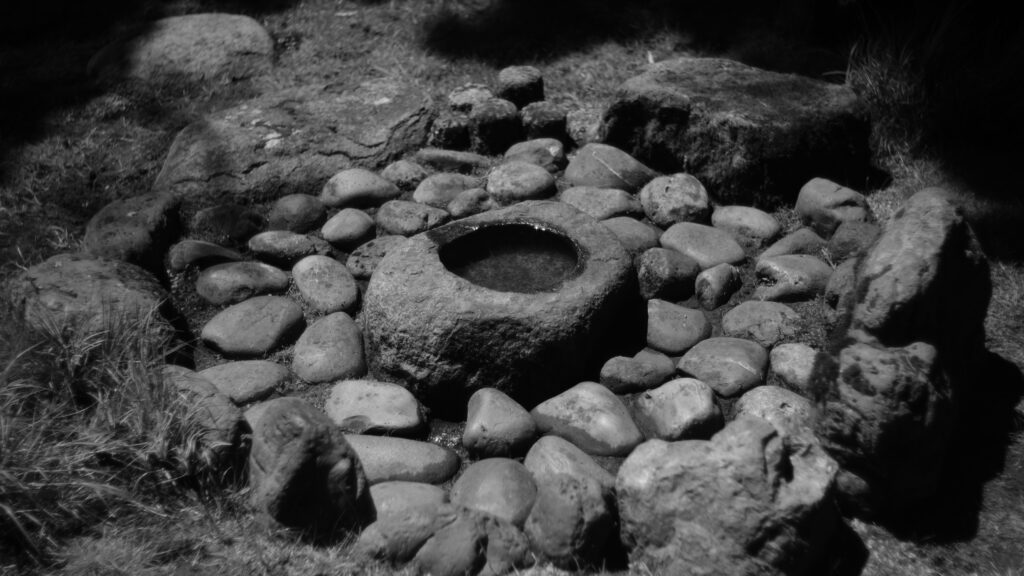
This one corner of the Zen garden stopped me in my tracks. It was a simple basin cut into the rock embedded in the ground with river stones arranged around it like people around a fire. But something about this small scene drew me in. It felt like a timeless bubble of absolute calm in the middle of a busy park filled with people in a city filled with people. I wanted to somehow go inside this stillness in the center of this little composition.
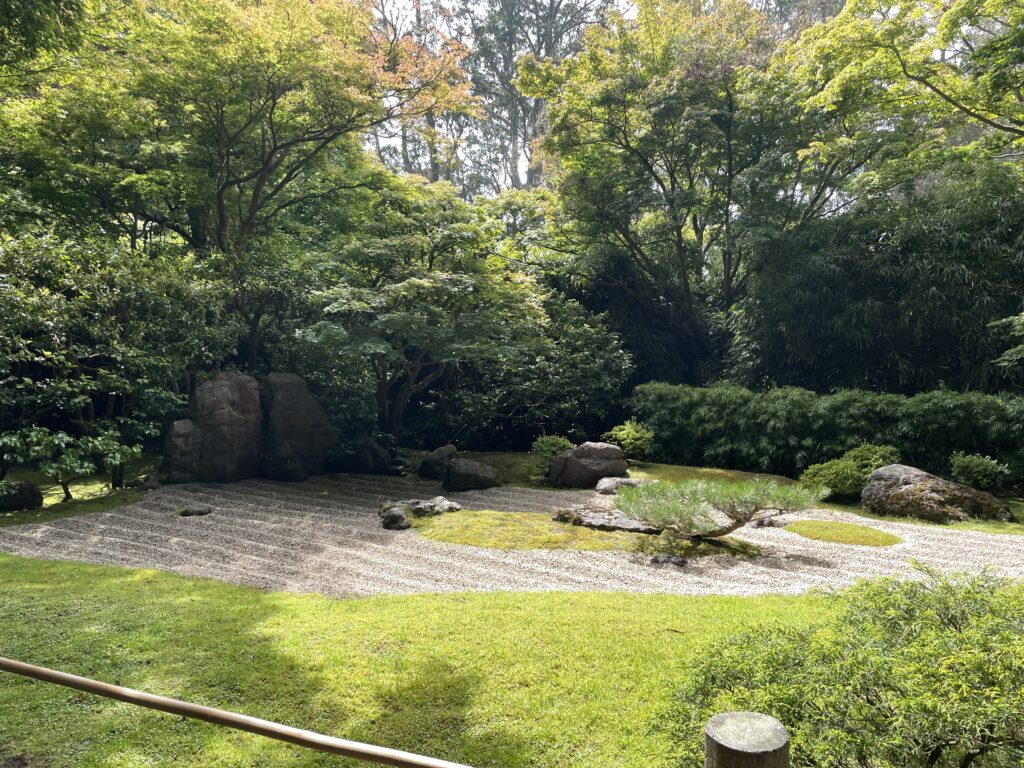
I stayed for a while behind the simple rope barrier before retreating to a bench to paint the larger garden scene. I thought about painting this still circle of stones but I knew I wouldn’t be able to capture what it had made me feel. I left after a peaceful hour thinking about the power of this kind of simple composition to create the potential for such powerful feelings.
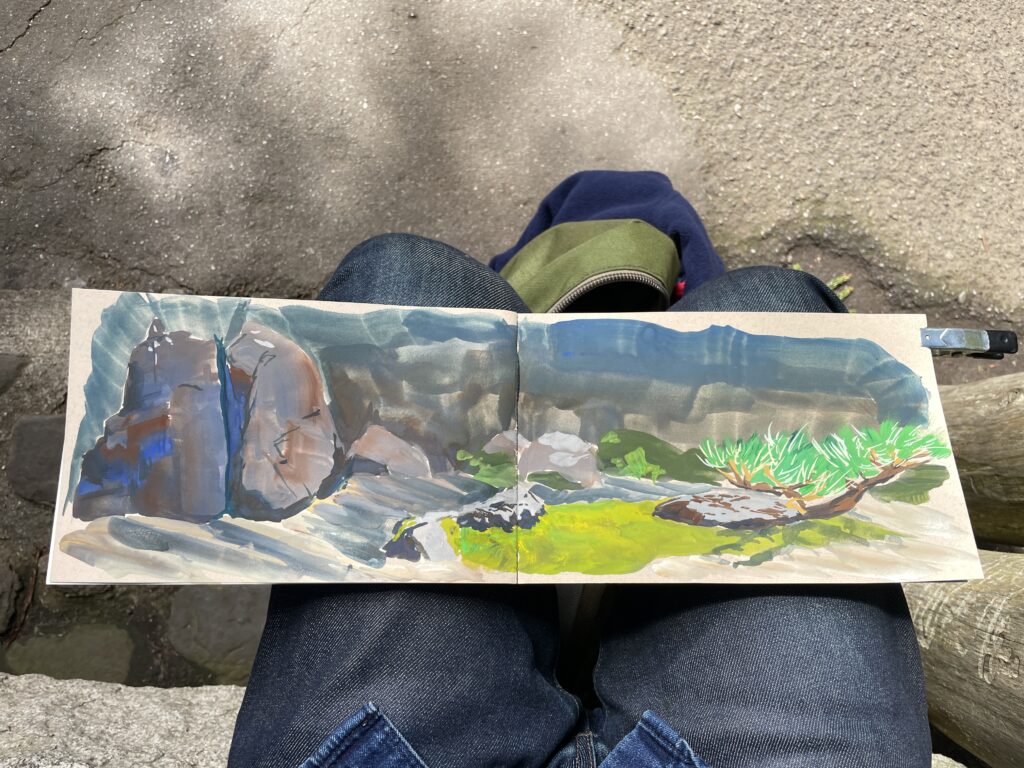
The more I learned about Japanese and Zen gardens the more I came to appreciate the way that many people weave them into spaces that aren’t much use for anything else. But when composed in this way can provide a portal to nature and calm particularly in short supply in city life.
My Zen Garden
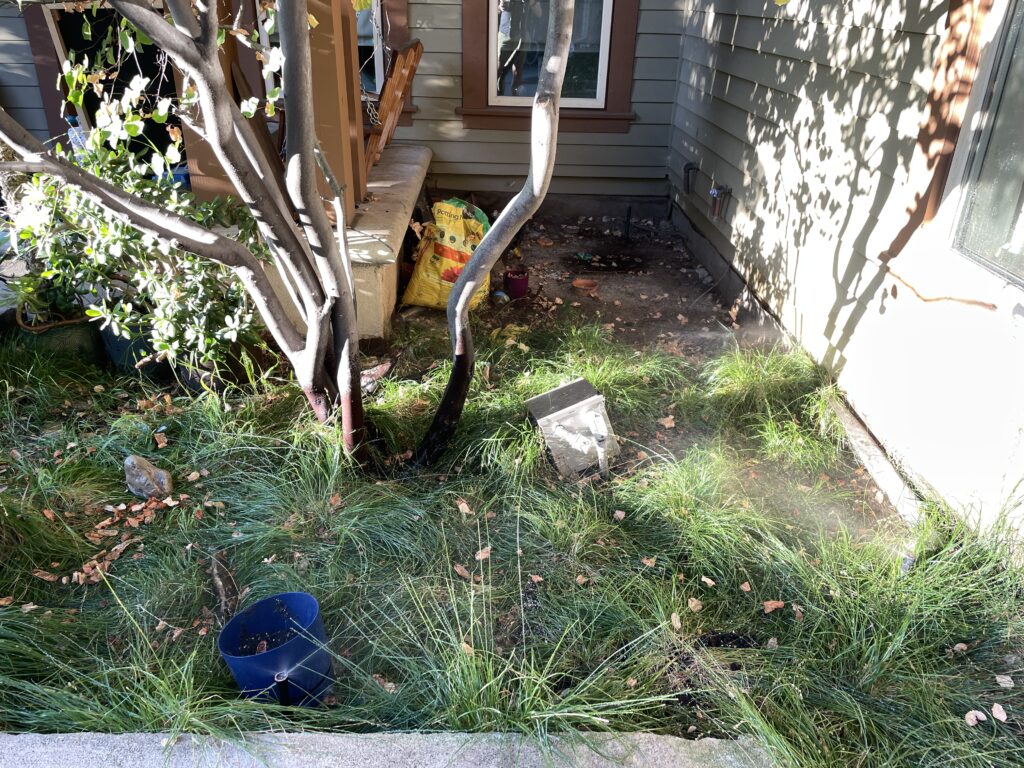
This immediately brought to mind a space that has been bothering me for years. I live in a townhouse in Pasadena, California. The exterior porch is ours but the planter around it is HOA-owned space. Our house is in a corner that gets almost no natural sun or rain. And consequently over the last decade has turned into a dirt patch covered in dryer lint. The kids have taken turns building fairy gardens and playing in it. But lately, it’s just been an eyesore that bothered me every time see it.
I started imagining how this space could be transformed into something like a zen garden.
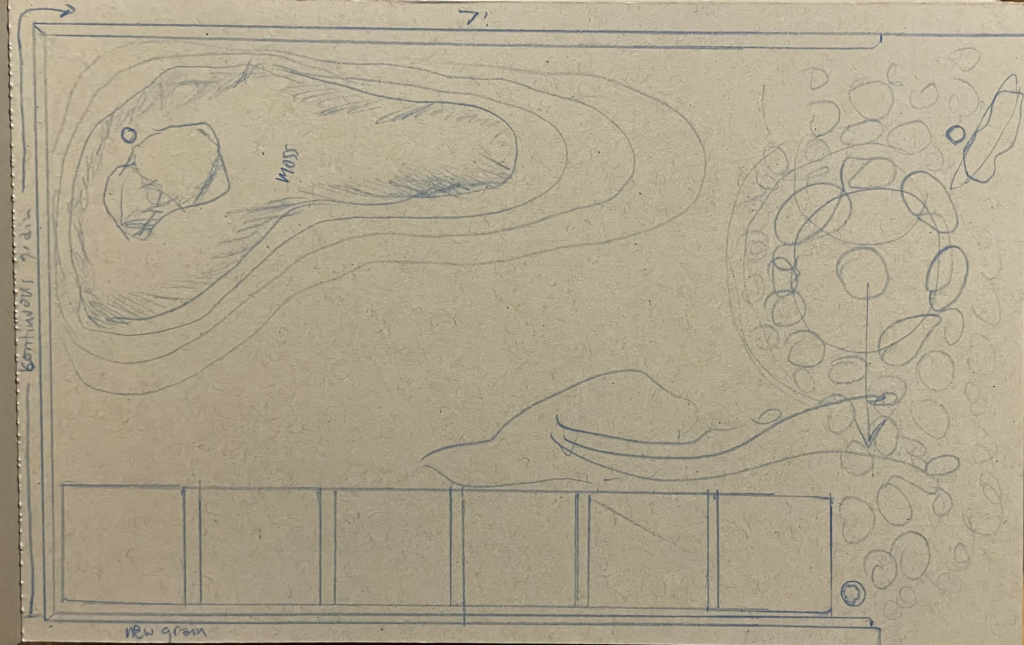
Materials
- Granite and volcanic stones claimed from the roadside of Angeles Crest Highway from eroding cliff-sides that had spilled onto the road
- Additional fill soil from the Hahamonga watershed
- Moss from nearby soil and the San Jacinto mountains
- River-tumbled granite gravel from Sunburst Decorative Rock
- California redwood border
Process
The Island
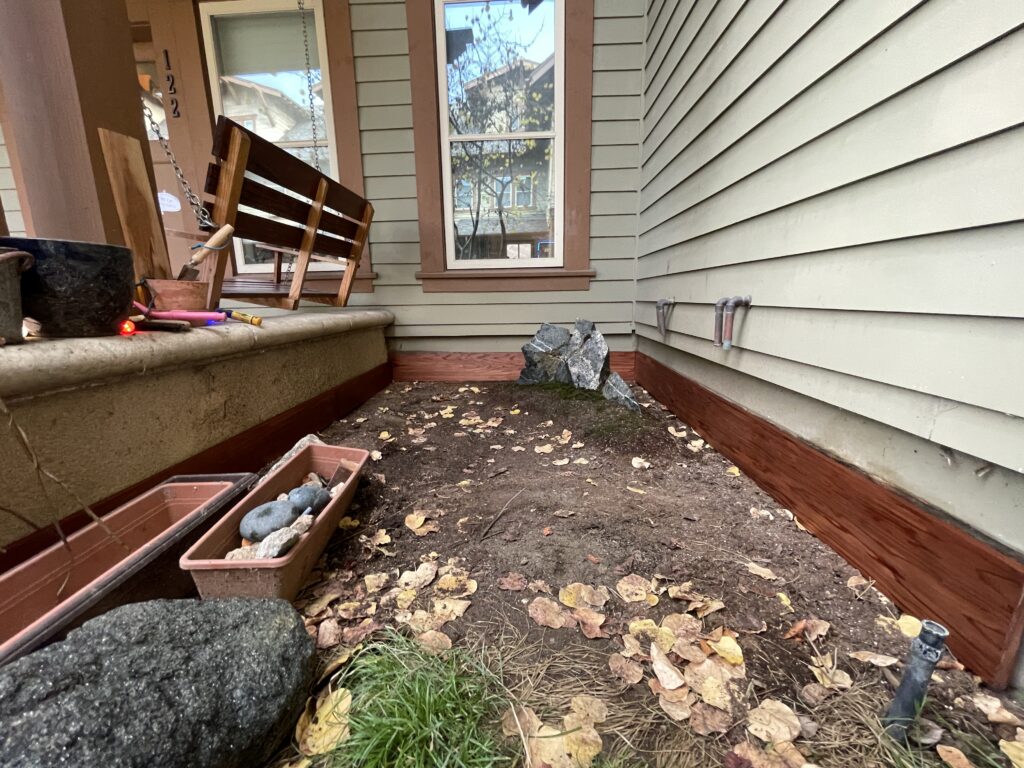
I started by adding some soil and fill to build up the miniature island. Later I added the redwood border. It creates a boundary around the composition. With just an oil finish it will weather and darken alongside the rocks in the elements.
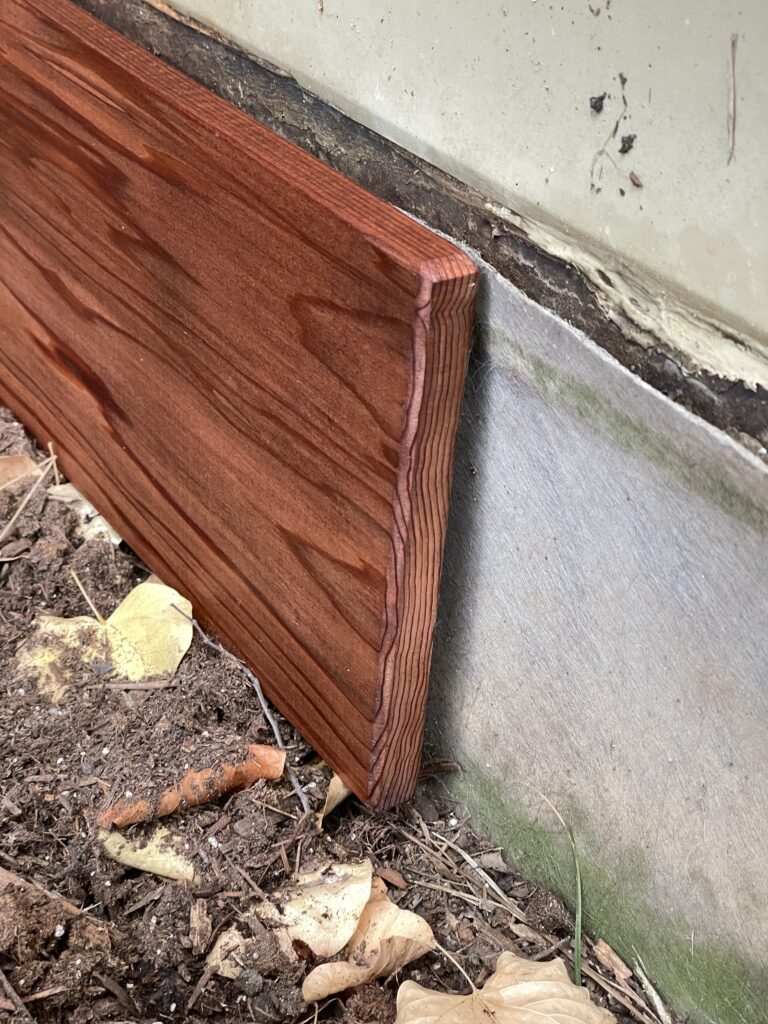
I’m particularly impressed at the way that much woodwork in Japanese gardens are still planed to a very smooth finish even though they will be worn by being left outdoors. I spent a lot of time trying to make a very lovely old-growth piece of redwood I already had work for this border but ultimately found some 8″ wide, clear redwood with nice grain at Anawalt Lumber in La Crescenta. You can see I used one of the old growth pieces in the left side as it didn’t need to be as high to cover the seam with the porch.
The Mountain
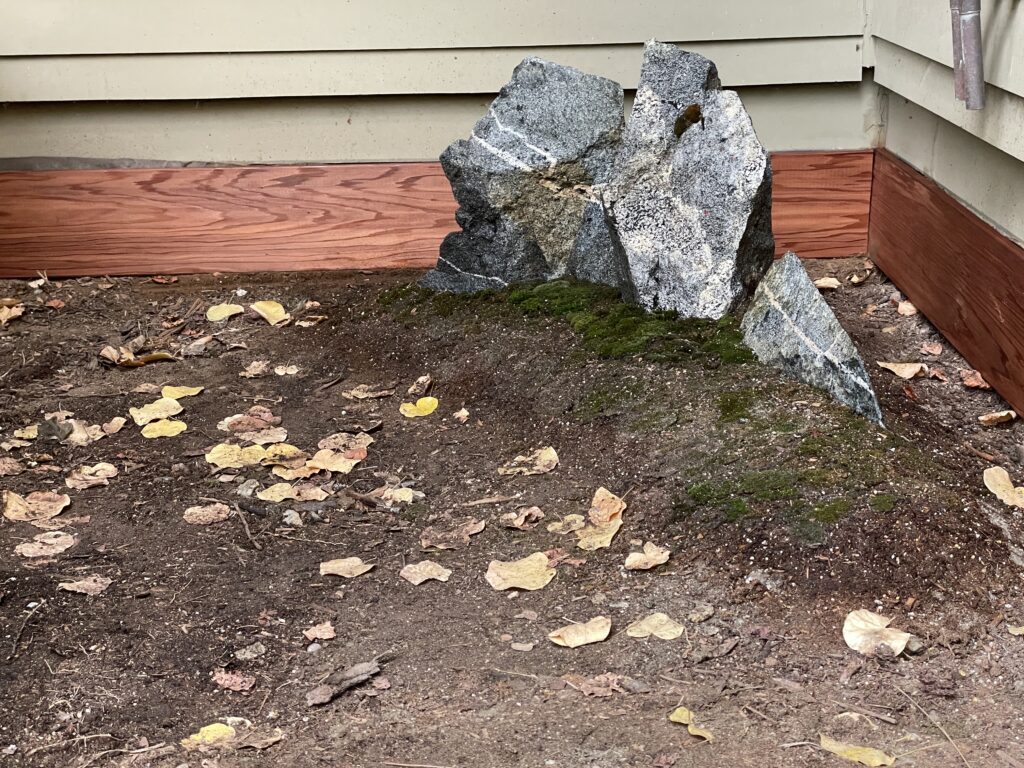
Then I organized several of the granite pieces into a little mountain range running along the spine of the island. I’ve experimented with several locally growing species of mosses but am still trying to get them to take hold and start spreading.
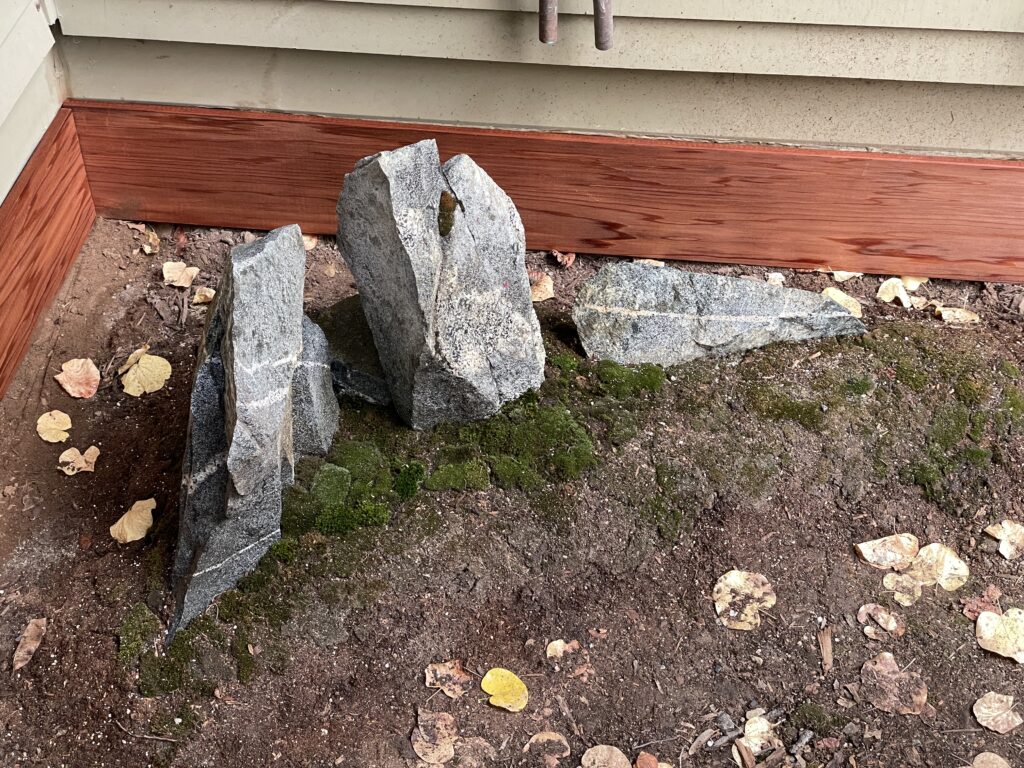
I’ve experimented with several locally growing species of mosses but am still trying to get them to take hold and start spreading.
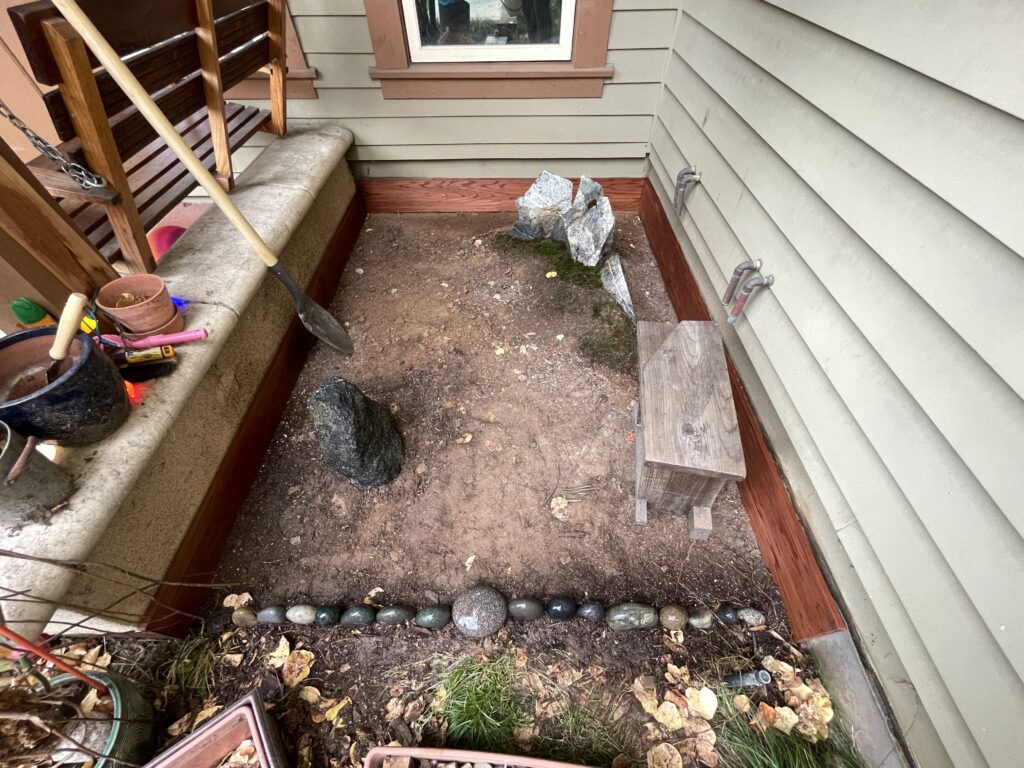
I added a second, vertical black volcanic stone and a small fence of river-stones to keep gravel in with one river stone in the center flat like a kind of open gate in and out of the space. In the future, if I can solve how to drill out a hemisphere from it I may make a more direct echo of the pool that first stopped me.
The Ocean
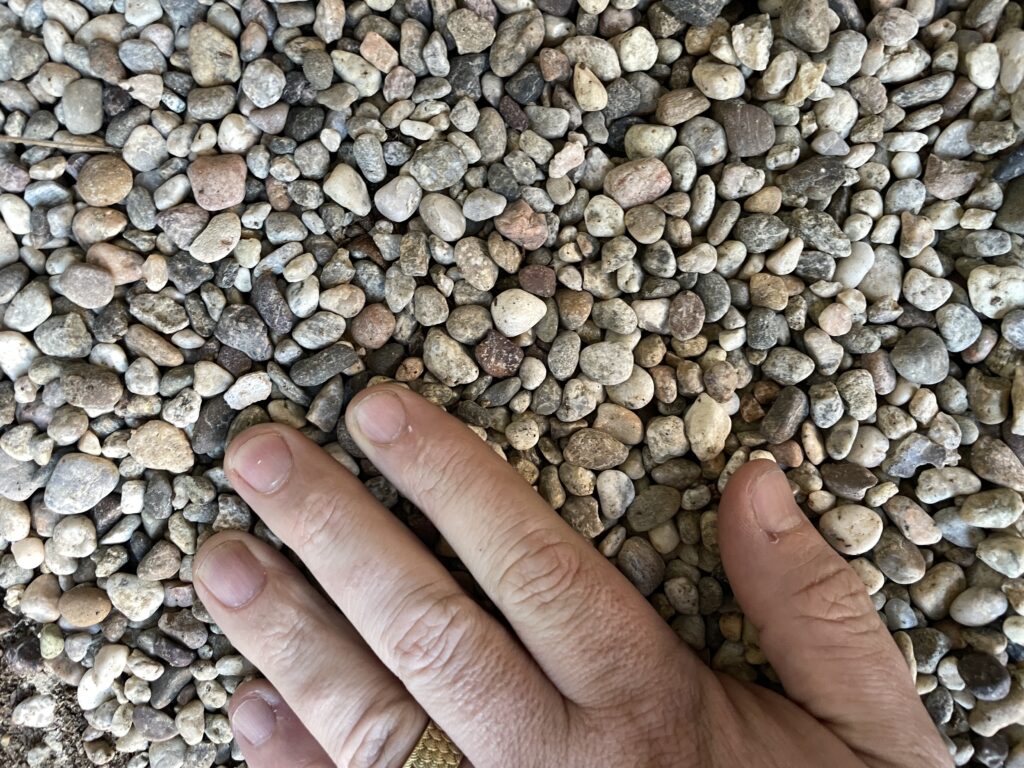
It took some time to find a gravel that worked. I wanted to keep with the granite theme and even have a fine enough size that it could be raked to resemble ripples or waves on water. I bought two different sample bags and made a small model in a redwood box and landed on this “Del Rio” 3/8″ stream-tumbled granite.
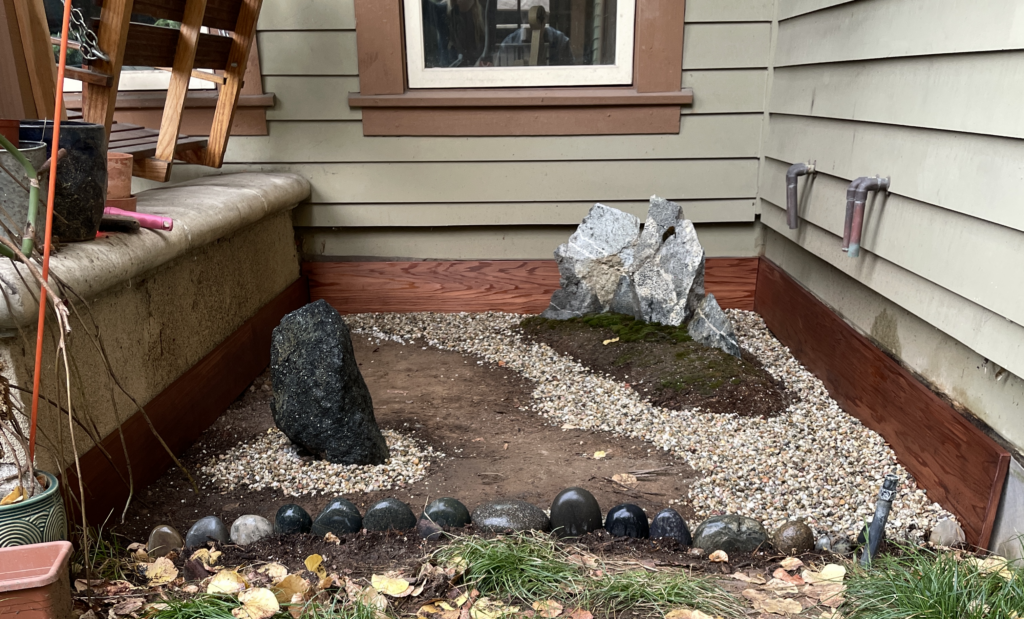
One 50lb bag only went this far. I had to wait a week to get some more.
Complete; for now
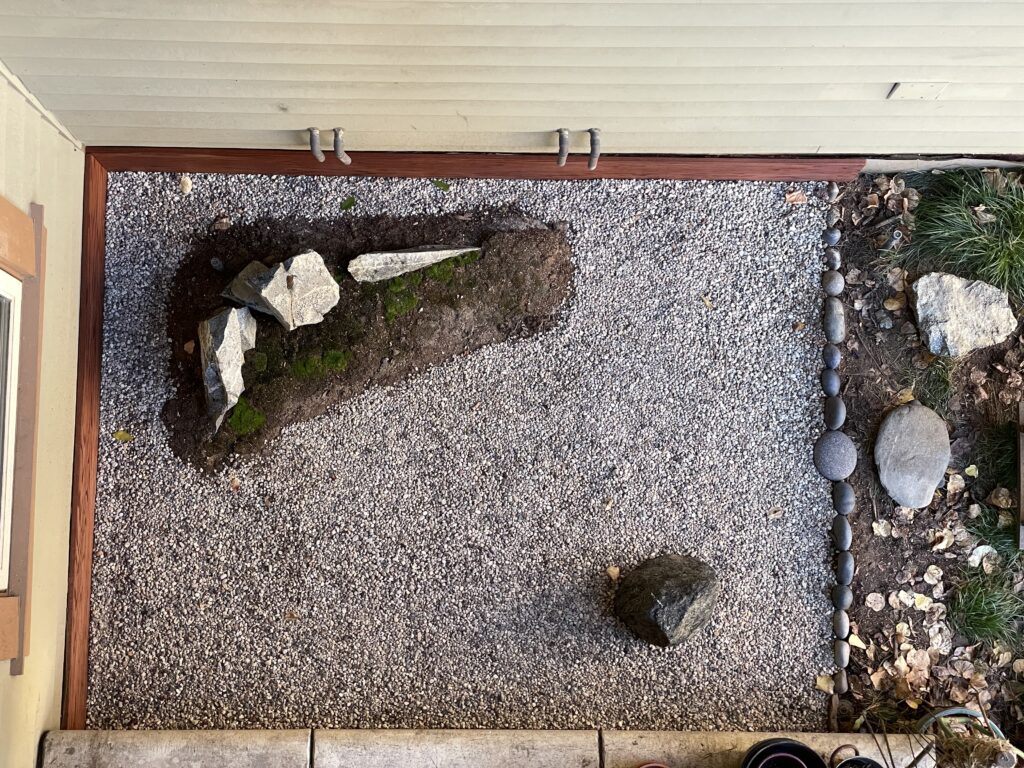
I’ve yet to have another experience like I described above. But every time I walk past this space, which happens every time I come and go from home, I feel a sense of stillness and calm that I can pause and inhabit in for a while.

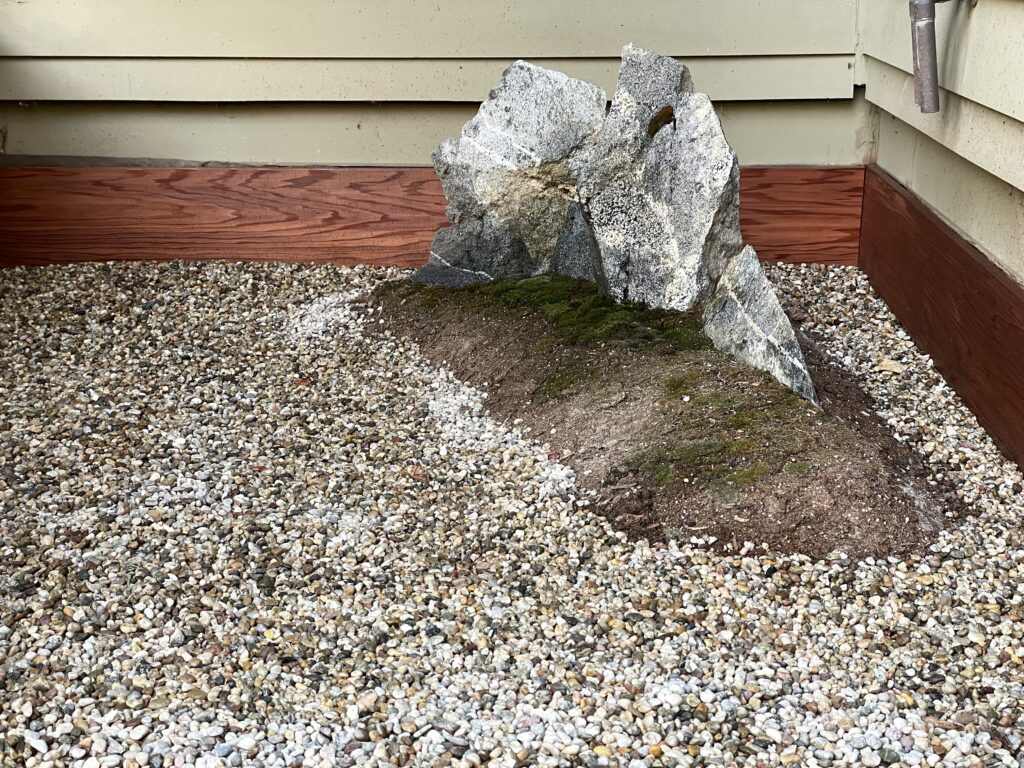
Impact on future work
I’ve long collected beautiful stones alongside beautiful wood and have even made a few compositions of exceptional stones with wooden bases. But this exploration encourages me think even more broadly about how natural materials can fit together into a temporary composition that both echo nature but are still carefully composed by a human mind.
When I felt what I felt at the Zen garden in Golden Gate Park, I also felt gratitude towards and connection with the person who designed the space. Increasingly, in my own creative work, I’m coming to see the value of of creative work being intrinsically linked to human attention, made concrete through embodiment in artifacts, spaces and flows.
